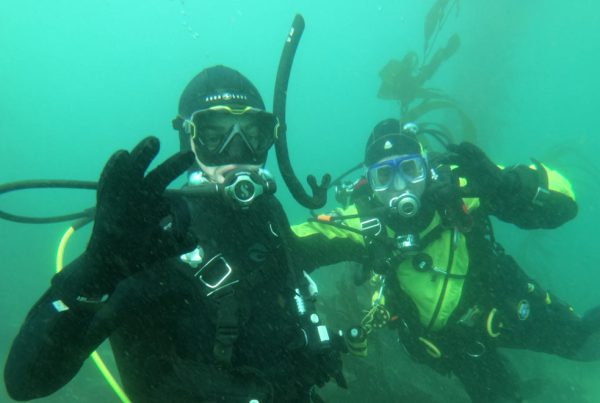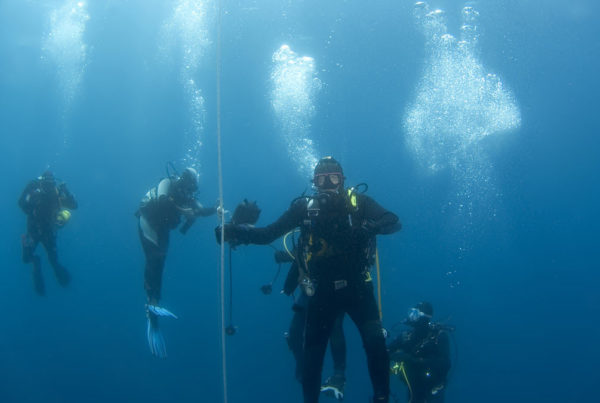Don’t you just love it when the dive boat captain puts the anchor right on the targeted reef and all you have to do is follow it down and you are right on the spot? Commercial divers call this a “down line.” It is especially useful when you need to find a very specific spot on the bottom and the visibility is not as good as you’d like. Without a line to follow right down to the dive site, you could spend your entire dive wandering around on a featureless sand bottom.
A well placed anchor will obviously alleviate this problem. But you have to use the anchor line properly or it could be your undoing. Remember, anchor lines are tied to boats and boats move, sometimes a lot.
DESCENT
As you head to the anchor line for descent, keep clear of the boat that is pitching up and down. You won’t want to bonk your head. Also, if there are currents and winds running, the boat will likely swing from side to side. Keep clear or keep your regulator handy should the boat pass over you. You would not want to get trapped under a boat without an air supply—a lousy way to start a dive.
If the boat is not moving up or down any more than a foot or two, then the anchor line would be a good place to hold on for a nice gradual descent that makes for easy ear equalizing. A pitching and rolling boat, on the other hand, means stay away from the anchor line. You can keep it in sight as a guide for where you need to go, but if too close, it could knock you silly, dislodging gear and making your descent dangerous indeed.
On the bottom, the danger can worsen. If the boat is moving a lot, both up and down and side to side, the anchor chain can pose a serious hazard. And finally, an anchor straining at the pull of a boat in the wind and current can slip, catching a diver unaware. Stay clear.
Ascent
Returning to the anchor line as a reference point for ascent is always a good idea. This is especially important in a strong current. Stable anchor lines are good for steady slow ascents, safety stops, decompression stops, or just plain finding the boat. You may even want to put a device on the anchor or anchor line to assist in returning to the line underwater. Devices would include flashers, cylumes, lights, or electronic pingers. This is especially helpful on night dives. Keep in mind, however, that whatever device you use, it must be either inexpensive, very tough or both because an anchor and chain can take a lot of abuse.
Ascending, it is best to use the anchor line simply as a reference, keeping clear and not hanging on. If a strong current compels you to grip the line, do so only if it is not moving any more than two or three feet. Use a loose grip, slack arm, and neutral buoyancy. This will allow you to distance yourself from the jerking line and compensate for any up and down movements.
Anchor lines can be quite useful to divers for ascent and descent but they also can be dangerous. Take proper precautions and enjoy your dive with safety and in comfort.









